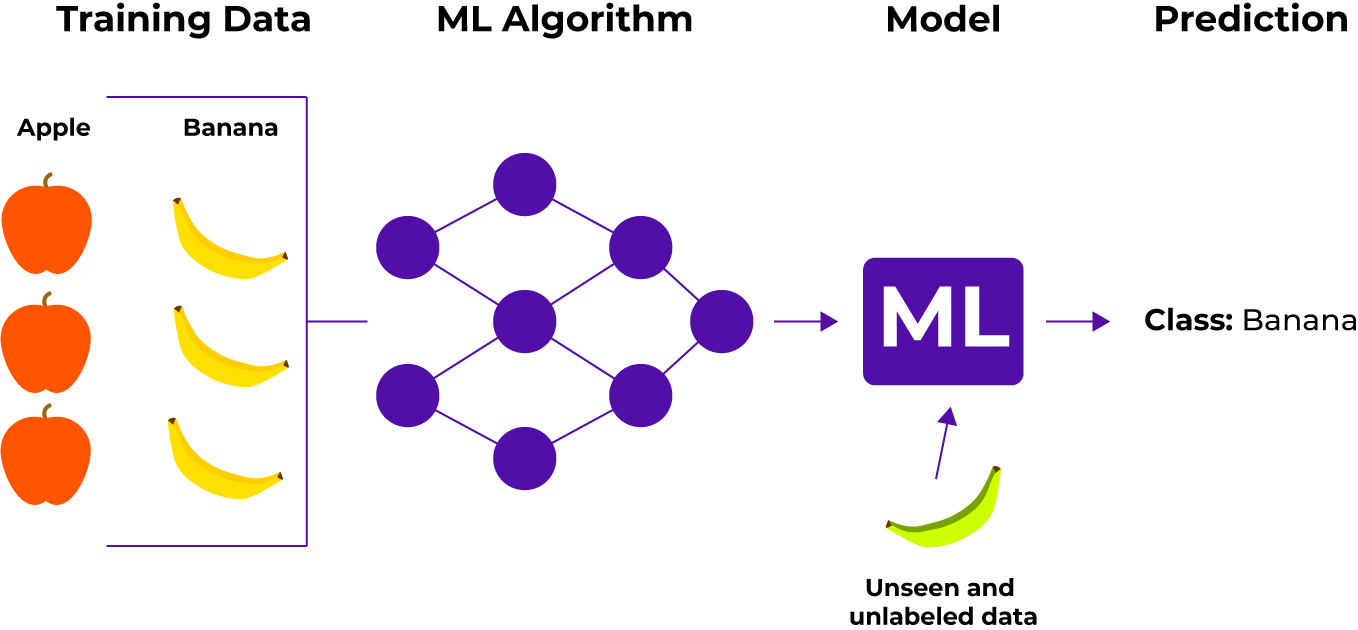Supervised Learning
In this type of learning, the machine are trained to provide the correct output by using several example inputs.
It is very similar to teaching a child with the use of toys.
The data is given to the machine in the form of examples with labels, we can feed a learning algorithm with these example-label pairs one by one and trained the machine accordingly. Over time, the algorithm will learn to approximate the exact nature of the relationship between examples and their labels. When fully-trained, the supervised learning algorithm will be able to observe a new, never-before-seen example and predict a good label for it.

Supervised machine learning can be classified into two types of problems, i.e. Classification and Regression Read More
Advantages Supervised Machine Learning
- Since supervised learning work with the labelled dataset so we can have an exact idea about the classes of objects.
- These algorithms are helpful in predicting the output on the basis of prior experience.
Disadvantages Supervised Machine Learning
- These algorithms are not able to solve complex tasks.
- It may predict the wrong output if the test data is different from the training data.
- It requires lots of computational time to train the algorithm.
Applications of Supervised Machine Learning
- Medical Diagnosis: Supervised algorithms are also used in the medical field for diagnosis purposes. It is done by using medical images and past labelled data with labels for disease conditions. With such a process, the machine can identify a disease for the new patients.
- Advertisement Popularity: Advertisements that will perform well is often a supervised learning task. Many of the ads you see as you browse the internet are placed there because a learning algorithm said that they were of reasonable popularity (and clickability).
- Speech Recognition: Supervised learning algorithms are also used in speech recognition. The algorithm is trained with voice data, and various identifications can be done using the same, such as voice-activated passwords, voice commands, etc.
- Spam Classification: In an email service, spam filter works as a supervised learning system. Feed email examples and labels (spam/not spam), these systems learn how to filter out the malicious emails so that their user is not harassed by them.